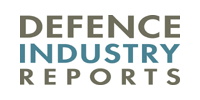FORT BELVOIR, Va., Nov. 6, 2012
Defense Logistics Agency Requires DNA Marking to Combat Counterfeit Parts
In an effort to enhance current safeguards to prevent counterfeit parts from entering the Defense Logistics Agency's supply chain, the agency introduced a new authentication marking requirement for the electronic microcircuits supply class.
DLA is requiring the use of deoxyribonucleic acid, more commonly known as DNA, authentication marking for future procurements of items falling within Federal Supply Class 5962, Electronic Microcircuits. The requirement only applies to procurements made by DLA.
Suppliers were notified of the new requirement by a special notice on the DLA Internet Bid Board System, the Supplier Information Resource Center and the Federal Business Opportunities websites.
"Implementation of this new requirement will reduce the risk of counterfeit parts entering the DLA's supply chain," said Chris Metz, chief of the Technical and Quality Policy division for DLA Logistics Operations.
Suppliers who provide DLA electronic microcircuits will be required to provide items marked with a unique, botanical SigNature® DNA mark. The authentication DNA used must be unique to the supplier, or the manufacturer of the part.
"DLA uses a number of tools to protect its supply chains," Metz noted. "SigNature® DNA marking is now one of those tools."
The initial requirement for DNA marking applies to a subset of microcircuits supplied under the Generalized Emulation of Microcircuits program.
There are various ways the authentication DNA can be applied to the microcircuit. Suppliers can apply a visible or invisible DNA mark on the part, or contractor's ink can be infused with the DNA marking material and applied to the part.
This new marking requirement will help to protect the microcircuits that are critical to the DoD weapon systems that DLA sustains, Metz said. The microcircuits, which DLA manages, are used across multiple weapon systems, she added.
DLA is initially targeting microelectronics, but the technology is used with other commodities commercially and has broad implications for other DLA products and equipment at risk for counterfeiting.
The new requirement also facilitates the goals of Congress to protect DoD's supply chains and national cybersecurity, which Congress outlined in the 2012 National Defense Authorization Act. This requires DoD, as well as industry, to develop counterfeit item detection and prevention measures for electronic items.
DLA is mandating authentication marking of the microcircuits using only SigNature® DNA for now. The choice of SigNature® DNA is based on a research and development project conducted between November 2010 and April 2011.
During the initial research and development project, DLA successfully marked approximately 20,000 microcircuits with SigNature® DNA at a U.S. based manufacturer. Blind samples distinguished between marked and unmarked microcircuits with 100 percent accuracy.
A second research and development project phase successfully marked approximately 385,000 microcircuits at a major offshore facility during a full-scale production cycle. The second phase demonstrated the technical and functional viability of marking microcircuits with SigNature® DNA.
"Marking the microcircuits at the distributor will establish provenance from that point forward and will afford DLA a level of identification and confidence beyond what we have now," Metz said. "This marking method also provides a way to assure authenticity as parts move within the DLA supply chains."
DoD deliberately seeks out promising commercial, off-the-shelf products and practices to address difficult problems, such as counterfeiting, and conducts research and development to explore their application to DLA processes.
DoD represents a tiny fraction of the electronics market, and manufacturers may not think it worthwhile to take on the costs of tagging their products to meet a DLA requirement.
"We are hopeful that sufficient microcircuit suppliers will provide SigNature® DNA marked products for identified items," she said. "DLA intends to purchase only SigNature® DNA marked microcircuits during the second phase of implementation."
DLA has put contingency plans in place should a SigNature® DNA marked part not be available.
By the end of 2012, DLA intends to evaluate other existing marking methods.
On Oct. 15, DLA posted a request for information on the Federal Business Opportunities website seeking information concerning existing techniques and technologies that mark items in a manner that authenticates the source of supply of an item via an unalterable, untamperable means.
"We are open to other solutions and tools as we learn about them," Metz said. "DLA's efforts to socialize the concept of authentication marking and encourage broader acceptance is a positive influence on the DoD supply chain participants' risk management practices and solutions development."
Interested parties are requested to respond to the RFI by Nov. 15.
As a Department of Defense combat support agency, DLA provides the Army, Navy, Air Force, Marine Corps, other federal agencies, and joint and allied forces with a variety of logistics, acquisition and technical services. The agency sources and provides nearly 100 percent of the consumable items America's military forces need to operate, from food, fuel and energy, to uniforms, medical supplies, and construction and barrier equipment. DLA also supplies more than 80 percent of the military's spare parts.
Headquartered at Fort Belvoir, Va., DLA has about 27,000 employees worldwide and supports more than 2,210 weapon systems. For more information about DLA, go to www.dla.mil , www.facebook.com/dla.mil or http://twitter.com/dlamil.
SOURCE Defense Logistics Agency
CONTACT: Susan Lowe, +1-703-767-6310, Susan.Lowe@dla.mil
